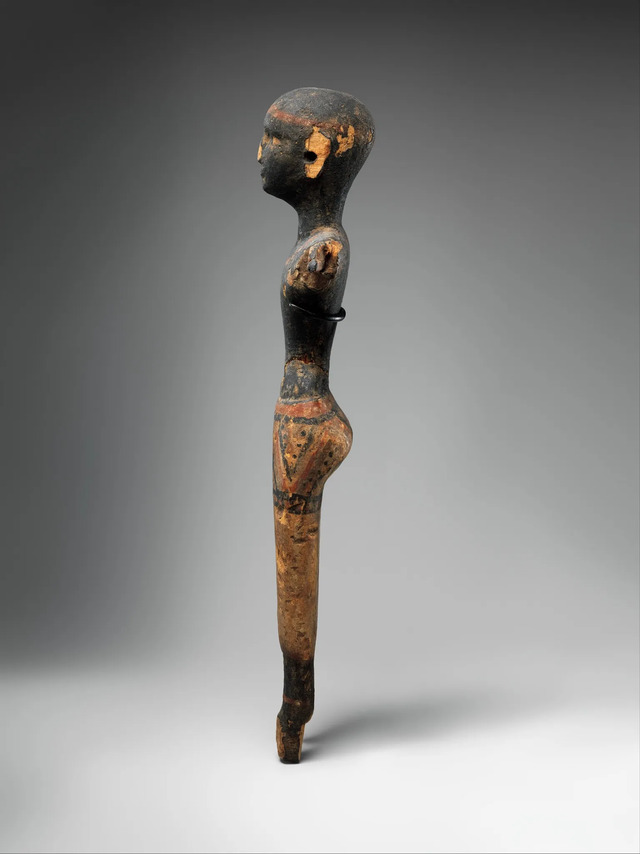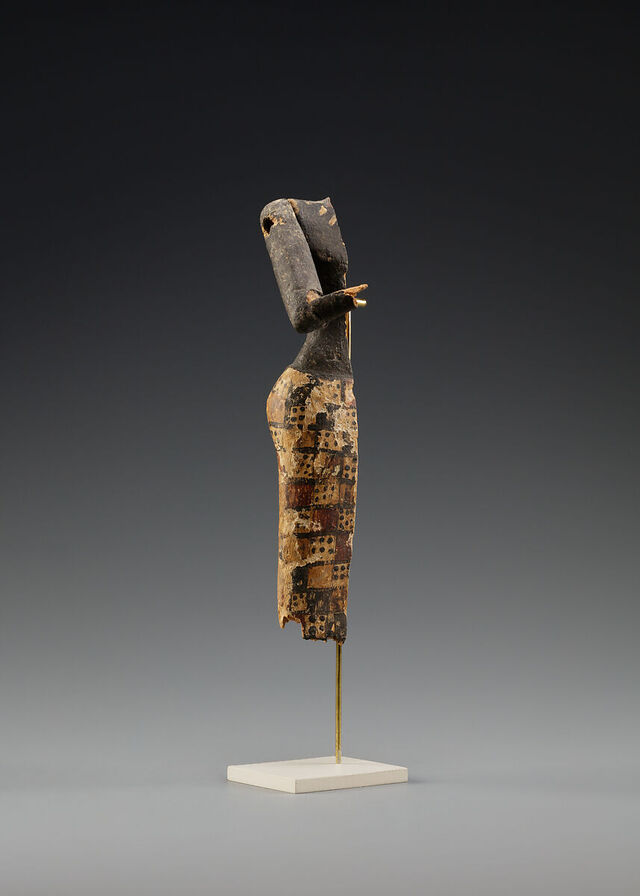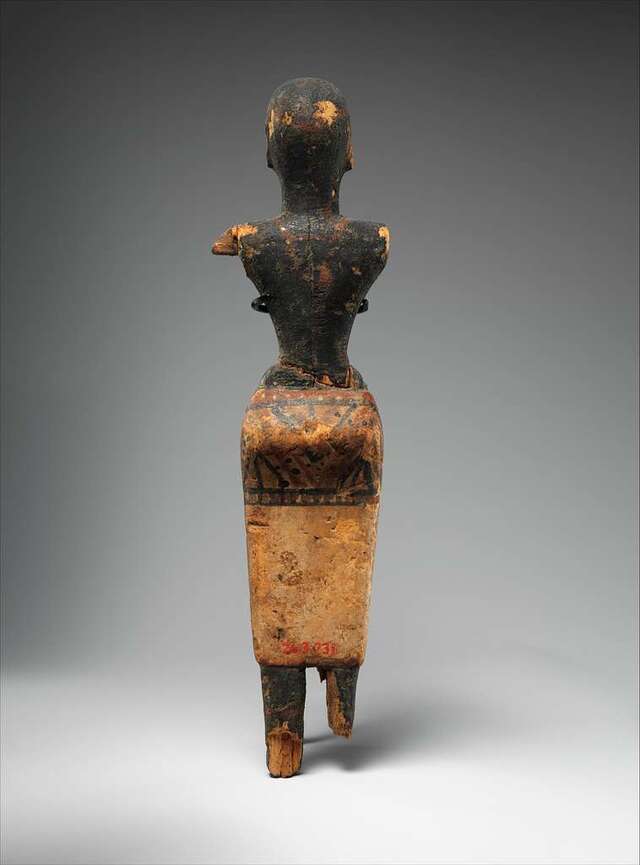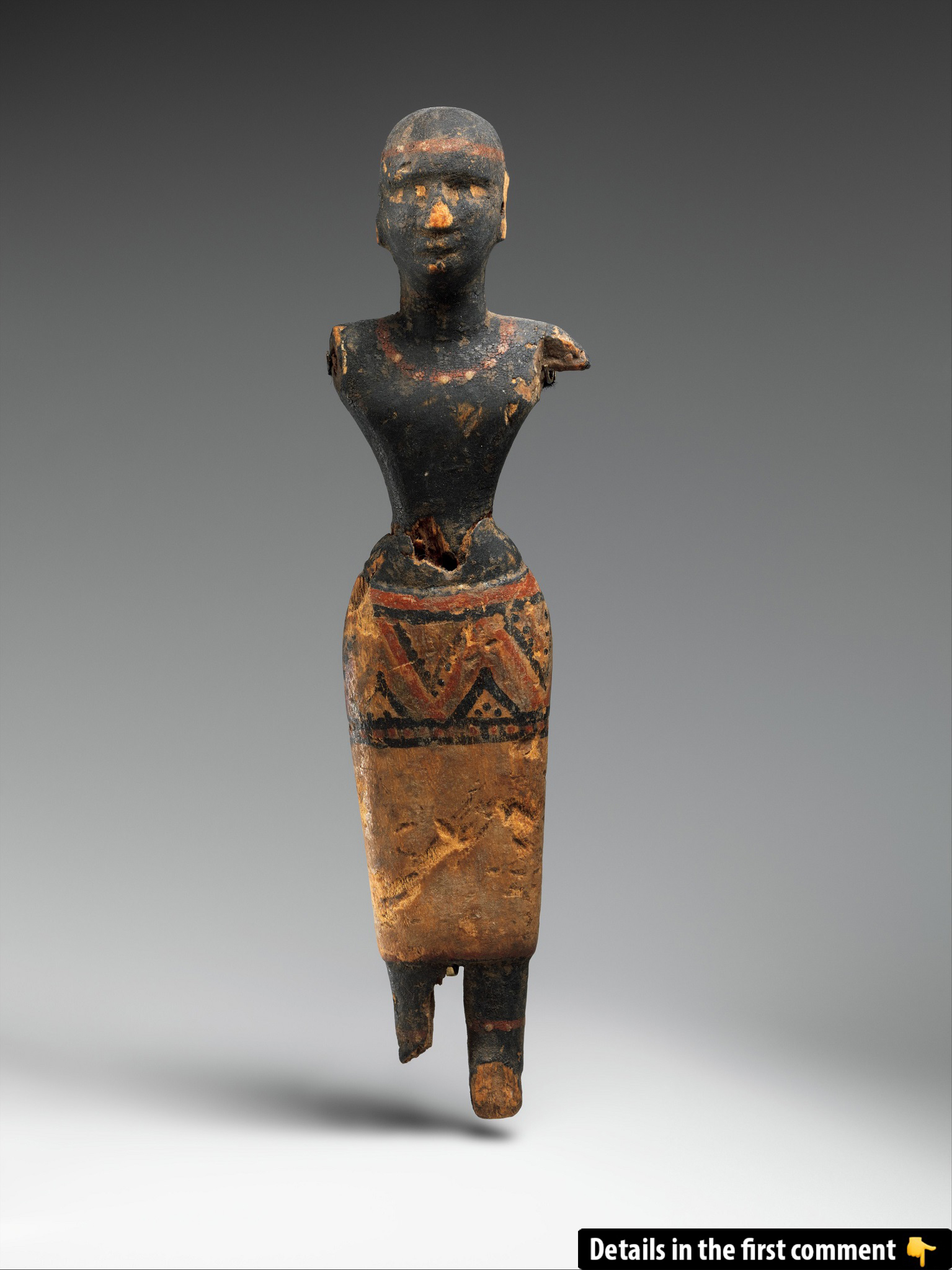In the heart of ancient Egypt’s Middle Kingdom, a fascinating artifact sheds light on the intertwined relationship between Egypt and Nubia. The statue of a young Nubian woman, found in a royal tomb, is more than just a work of art; it’s a symbol of cultural exchange, social hierarchy, and religious practices. Depicting a woman adorned in traditional attire and jewelry, this artifact provides a rare glimpse into the lives of Nubians in Egyptian society. As we unravel its story, we uncover the profound connections between two ancient civilizations, forever etched in stone and wood.
The Role of Nubians in Ancient Egypt
The relationship between Egypt and Nubia is one that evolved over centuries, marked by both cultural exchange and military conquest. Nubia, rich in resources like gold, ivory, and incense, had long been an essential trading partner for Egypt. By the Middle Kingdom (c. 2030-1981 BC), these interactions had expanded to include military engagements, with Egyptian pharaohs often seeking to control Nubia’s resource-rich territories.
Yet, Nubians were not merely subjects of Egyptian rule. Their presence in Egyptian art, particularly in royal contexts, suggests a degree of importance beyond mere servitude. Nubians were frequently depicted in Egyptian tombs and temples, often in roles as attendants, warriors, or tribute bearers. The artistic representation of Nubians in Egyptian art is complex, as these figures were portrayed both as subjugated peoples and as important members of Egyptian society.
The Statue of the Woman of Nubian Descent

The statue in question represents a young woman of Nubian descent, dressed in a brightly patterned skirt, a necklace, anklets, and a headband. At just 18 cm in height, the wooden figure is delicately painted, with the details of the attire providing insight into the fashion and social customs of the time. The woman’s distinct features and cultural attire suggest that she was an attendant or a servant within the royal court, possibly linked to the Hathor priestesses or royal wives of Pharaoh Nebhepetre Mentuhotep II.
What stands out most about the statue is its craftsmanship, particularly the care taken in depicting the intricate details of the jewelry and clothing. Such attention to detail may not only reflect the woman’s social status but also her cultural heritage. The use of paint and wood, materials that were both durable and symbolic, underscores the importance of this figure as both a servant and a cultural representative of Nubia within Egyptian royal circles.
Video
Watch the video to explore how Egyptologists removed ancient Egypt from Africa and the impact on the understanding of ancient Nubia! Don’t miss this thought-provoking historical discussion.
Context and Purpose: Attendant or Mourner?
While the figure’s role as an attendant or servant seems likely, there is another layer of meaning to the statue that has garnered the attention of scholars. Some experts believe that the statue, along with other similar figures found in the same tomb, may have been part of a symbolic group performing ritual actions like clapping their hands. This ritual is commonly associated with funerary practices in ancient Egypt, where such actions were believed to help guide the deceased’s soul to the afterlife.

In ancient Egyptian culture, the act of clapping one’s hands was not just a sign of respect or reverence; it was deeply intertwined with rituals performed for the deceased. These rituals were meant to ensure the deceased’s peaceful transition into the afterlife, and the figures, likely placed in the tomb to act as surrogates for real people, were believed to be performing essential tasks for the deceased in their journey beyond death.
Nubian Influence in the Egyptian Court
The presence of Nubians in Egyptian royal contexts is not just a reflection of the military or economic power Egypt had over Nubia, but also an acknowledgment of the importance of Nubians in Egyptian society. Nubians held various roles in the Egyptian court, and their depiction in such funerary contexts underscores their significance. While many Nubians were depicted as attendants or servants, these figures were often shown in the service of gods, pharaohs, or high-ranking individuals, highlighting their role in the cultural and religious landscape of Egypt.
The Middle Kingdom, in particular, was a time of increased trade, military engagement, and diplomatic ties between Egypt and Nubia. The depiction of a Nubian woman in the tomb of a high-status Egyptian speaks to this complex relationship, where Nubians were not only subjugated but were also respected and integrated into Egyptian society. In the tombs of wealthy and powerful Egyptians, Nubians were often depicted in noble and dignified roles, showcasing the extent of cultural integration during the Middle Kingdom.
Middle Kingdom Egypt: Trade, Diplomacy, and Cultural Exchange
The Middle Kingdom was a period of significant growth for Egypt, both politically and culturally. Egypt’s relationship with Nubia was multifaceted, encompassing not just military conquests but also economic partnerships and diplomatic negotiations. The Nubians, with their access to valuable resources, were key players in these exchanges. Nubia’s proximity to Egypt meant that cultural influences were reciprocal—Egyptian art, religion, and even fashion were impacted by Nubian styles and practices, and vice versa.
This exchange of cultural and material goods is reflected in the artistic depictions of Nubians, such as the statue of the woman of Nubian descent. The clothing, jewelry, and even the ritual practices portrayed in these artworks illustrate the blend of Egyptian and Nubian cultural elements. The statue serves as a reminder that the Middle Kingdom was not just a time of Egyptian dominance but also a time of significant interaction and mutual influence between these two ancient civilizations.

The Excavation of Tomb MMA 511 in Deir el-Bahari
The statue of the woman of Nubian descent was excavated from Tomb MMA 511 in Deir el-Bahari, Thebes, during the Metropolitan Museum’s excavations in the early 20th century. This tomb, part of the larger archaeological site of Deir el-Bahari, is known for its wealth of funerary artifacts, many of which offer insight into the lives and beliefs of the people interred there. The Metropolitan Museum’s excavations in the 1920s and 1930s unearthed numerous objects, including the statue, which helped to further our understanding of the Middle Kingdom’s cultural practices and the role of Nubians in the Egyptian world.
Video
Watch the video to explore the treasures of ancient Nubia! Don’t miss this captivating look at one of Africa’s most influential civilizations.
Conclusion: The Symbolism and Legacy of the Statue
The statue of the woman of Nubian descent serves as a testament to the complex and multifaceted relationship between Egypt and Nubia during the Middle Kingdom. More than just an art piece, the statue offers a glimpse into the social and cultural exchanges that took place between these two civilizations. Through its intricate design, the statue not only celebrates Nubian heritage but also highlights the integral role Nubians played in Egyptian society—whether as servants, attendants, or mourners.
In the context of the tomb, the statue’s symbolic role in the funerary rituals of the deceased reflects the broader Egyptian belief in the importance of ensuring a smooth journey to the afterlife. This statue, along with others found in the tomb, provides valuable insight into both the social hierarchy of the time and the cultural exchanges that shaped ancient Egyptian art and society. As one of the most compelling artifacts of the Middle Kingdom, it continues to enrich our understanding of the ancient world and its complex interactions.



